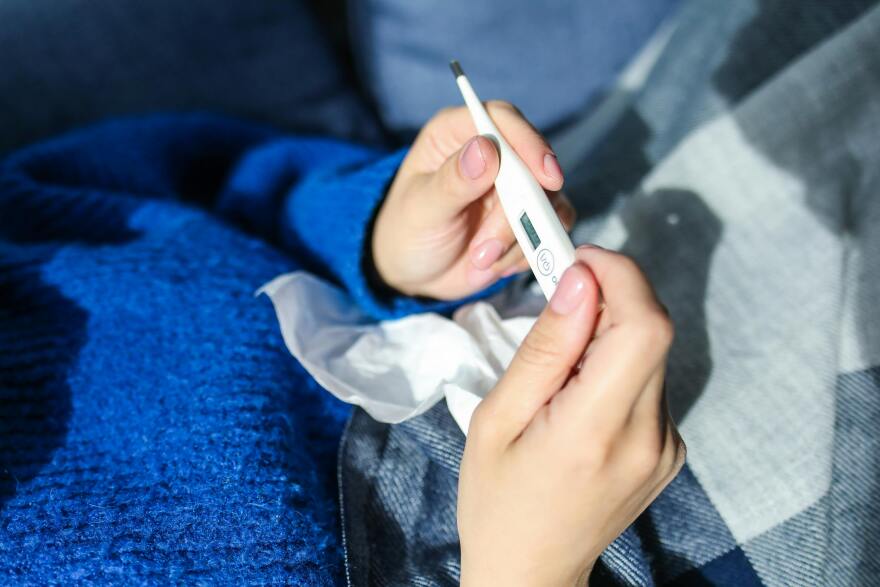BETHLEHEM, Pa. — Following state trends, the Lehigh Valley may be on its way down from a spike in Influenza A cases.
But an influx of Influenza B cases may follow, especially factoring in that Lehigh and Northampton counties are among the worst in the state for flu cases, according to the Pennsylvania Department of Health.
The respiratory virus dashboard by the state Department of Health reports all types of influenza rates per 100,000 persons by county from Sept. 29, 2024, through Feb. 15, 2025. A map on the dashboard puts Lehigh and Northampton counties among the highest quartiles.
The dashboard also shows cases by county reported to PA-NEDSS (Pennsylvania's version of the National Electronic Disease Surveillance System). In both counties, the case quartiles are 3,166-16,261.
Season comparisons for statewide rates also show a higher peak than years prior during week 19 — from Feb. 2-8. The first week of respiratory season is the first week of October and week 52 is the last week of September.
Those comparisons go as follows:
- 2018-19: 6,620
- 2019-20: 13,699
- 2020-21: 103
- 2022-23: 1,042
- 2023-24: 9,806
- 2024-25: 28,887
"Influenza activity is very high, but decreased slightly from last week."Pennsylvania Dept. of Health Respiratory Virus Dashboard Feb. 15 update
Lehigh County has seen 7,426 influenza cases and 1,511 RSV cases so far this season. Northampton County isn't far behind, with 6,283 influenza cases and 971 RSV cases.
The two counties are among the top 10 in the state for total influenza cases during this respiratory season, with Lehigh County having the sixth-most cases and Northampton County sitting at eighth. Philadelphia has recorded the most cases at 16,261.
"Influenza activity is very high, but decreased slightly from last week," the latest weekly update from the dashboard says. "The percent of emergency department visits resulting in influenza diagnosis is very high for all ages statewide, especially in the 0-4 and 5-24 age groups."
The U.S. Centers for Disease Control and Prevention classified the season as a "high severity season overall and for all age groups," for the first time since the 2017-2018 season.
"Nationally, seasonal influenza activity remains elevated and is higher than or similar to the highest it has been all season for each indicator reported in FluView," a weekly update published from the CDC on Feb. 14 says. "In addition, the percent of specimens testing positive for influenza at clinical labs and the rate of laboratory confirmed influenza associated hospitalizations reported to FluSurvNet are higher than any peak week going back to the 2015-2016 and 2010-2011 seasons, respectively."
It reports that emergency department visits in Pennsylvania are decreasing for COVID-19 and RSV, but are increasing for the flu.
Influenza A and Influenza B
At Lehigh Valley Health Network, part of Jefferson Health, Chief Infection Control and Prevention Officer Dr. Alex Benjamin said flu rates in the Lehigh Valley parallel the state and national rates.
Overall, Benjamin described it as "just a very busy flu season."
"I don't think we're at the point where we were in the COVID pandemic, where we were running out of bed and shuffling things around," Benjamin said. "We've had to try to make sure we can get all of our patients in the hospital as best we can and using additional resources. So definitely very busy, not overwhelming."
LVHN has seen a few flu deaths as well, Benjamin noted, but that also mimics national trends.
The CDC reported a 2.6% increase in "deaths attributed to influenza" for the week ending Feb. 8 and the state's respiratory virus dashboard says "348 influenza-related deaths have been reported in PA residents by the National Center for Health Statistics for the 2024-25 season."
Most cases — especially those during the peak — are Influenza A. Benjamin said Influenza B should come up next.
"The numbers seem to be going down ever so slightly, and I think that would be a great relief. However, we know that also historically, this is also the time when cases of Influenza B start to pick up as well," he said.
"We'll see if that plays out this year, whether that will happen, you know, on the tail end of flu A — which is the big driver of all the cases that we're seeing now — if that will occur when flu A is coming down, or if it's going to be this sort of flat flu A curve, and then more flu B — we can't tell just yet."
Symptoms between Influenza A and B don't differ, Benjamin said, just that one type peaks earlier in the season and one later. Both present the "classic" symptoms, he said, like "quick onset fevers, muscle aches, body aches, just feeling run down."
"You know, classically, we're told that people feel like they got hit by a Mack Truck," Benjamin said. "And sometimes they can tell you exactly what time they got hit by the Mack Truck."
He also noted that cases that land residents in the hospital are typically among those with other medical conditions like chronic lung disease, asthma or heart disease.
Preventative measures
Not sick? Benjamin said he still recommends getting a flu shot.
"I don't think it's too late to get a flu shot, you know?" he said. "I think having that extra protection — what it does for you to prime your immune system is in high peak season can't be under understated. So even if you haven't gotten a respiratory illness, and you're like, 'Well, I don't know, do I need this?' I think the answer is still yes."
Patients who get the flu and have already received their flu shot "gives you a little bit of a boost," Benjamin said. Both the Mayo Clinic and CDC say the vaccination can reduce the risk of severe illness from the flu.
"... I think what you might think of as extra precautions really are probably very sensible right now when it comes to like going into public spaces."Dr. Alex Benjamin, Chief Infection Control and Prevention Officer of LVHN, part of Jefferson Health
And, above all, Benjamin says "we will never not stress hand washing," adding that hand sanitizer "is going to be your best friend." In high severity seasons like this, Benjamin said he even recommends wearing masks to common areas like grocery stores.
For high risk individuals, like the elderly, doctors can prescribe Tamiflu to prevent secondary infection to those who have been around or may be near someone who is already infected. Those with compromised immune systems are considered a "good candidate" for Tamiflu, he said.
"I think we should have a heightened suspicion of developing respiratory illnesses this time of year because of how high the cases are," Benjamin said. "And so I think what you might think of as extra precautions really are probably very sensible right now when it comes to like going into public spaces."


